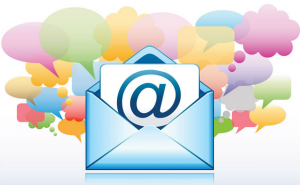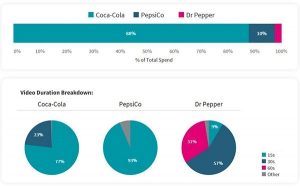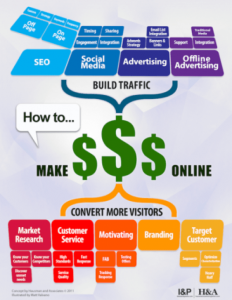
Marketers hear it all the time: The end of email marketing is nigh . . . Consumers are so overwhelmed by their inboxes that marketing efforts there are falling on deaf ears . . . Email isn’t as effective as . . . yadda, yadda, yadda.
But savvy marketers know none of that is true.
Earlier this summer, I read through a research report from GigaOM comparing the effectiveness of various digital marketing channels. Like many similar studies, their findings show that marketers continue to rely on email as their digital marketing “workhorse.” According to their survey, 56 percent of marketers cited email as their BEST digital tool for customer retention – far ahead of the 37 percent who cited social media. Email also consistently ranked higher in awareness, acquisition and conversion than any other tactic, including social, content marketing and paid search.
What’s so great about email? For starters, email is:
- Ubiquitous. The number of email accounts in the world is on track to reach 4.1 billion by the end of next year. It makes sense to go where your customers are.
- Cost-effective. Compared to direct mail or even paid search or social ads, email is a bargain with proven ROI. Email remains a trusted go-to tool for marketers because it’s less costly and can reach more people than other channels or methods.
- Customizable. It may sound counterintuitive at first, but thanks to today’s digital marketing technology, you can send personalized messages to a large number of people all at once. By using consistent content in every email and yet tweaking graphics or certain text blocks, emails can be dynamically targeted to various segments.
But in order to reap the benefits of email marketing, you do have to make sure your strategies and tactics are keeping pace with consumer expectations and data-driven marketing practices. Approaching email with the “same old, same old” just won’t cut it anymore.
Fortunately, there are a number of areas where a little focus can make a big impact. If your email marketing efforts could use a boost, consider shifting toward:
- Behavior-based triggers. Remember pick-a-path books? Think of the customer journey like that, where each decision propels a buyer in a different direction. An email from you can help guide a customer to the next step, motivate her to come back to an abandoned cart, suggest use of a new loyalty program for the first time, or encourage some other move forward on the customer journey.
- Hyper-targeting. You may already be segmenting your email list by demographic data, such as age or residence, but you can go even further by personalizing your content with individual preferences. Use data from across a series of channels – offline databases, social media, etc. – to know more about your customer and further your targeting efforts.
- Responsive email design. Responsive design means that no matter what device your customers are using to read your emails, the content will automatically optimize to that screen size. So if a customer starts reading your email at their desk top, and then continues reading it using a mobile device while on the go, he’ll be able to easily access the information presented with ease.
- The right analytics. Of course you’re looking at numbers, but are you looking at the right ones? Opens and clicks no longer tell the whole story. Thanks in part to the recent shift Google made when it introduced inbox tabs, many of your customers may not look at your email as soon as you send it. The good news is that they’re looking at it when it’s the right time for them, which is data worth tracking in itself. When do they open the email? Do they check it right away? Or are they more likely to buy if they read the email only when they’re thinking about buying? With the right analytics tools, you can monitor campaign performance and adjust your strategy as needed to optimize campaign results.
- Testing. One of email’s greatest strengths is how adaptable it is. You’ll see better results by testing as much as you can. A/B test subject lines, experiment with combinations of targeting, alter the time of send, tweak offer details… test it all! Then, once you find what works, test it again to make it even better.
Email should be your marketing workhorse. If it’s not, you need to re-access your strategies and update your marketing mix so you can take advantage of all of the data available to you for driving highly personalized digital messages that truly resonate with your customers.
Digital & Social Articles on Business 2 Community
(323)








